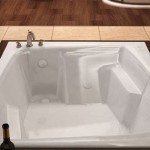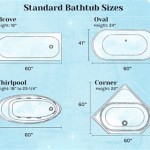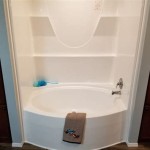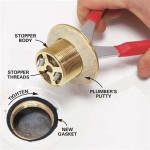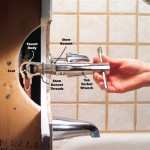Elderly Walk In Bathtubs
Walk-in bathtubs offer a safer and more accessible bathing experience for elderly individuals, promoting independence and reducing the risk of falls. These tubs feature a watertight door that allows users to enter and exit the tub comfortably, eliminating the need to step over a high threshold. This design is particularly beneficial for those with mobility challenges, arthritis, or other conditions that make traditional bathing difficult.
Several key features distinguish walk-in tubs from standard bathtubs. Low entry thresholds, typically ranging from a few inches to several inches high, minimize the lifting of legs required for entry. Built-in seats provide a comfortable and secure place to sit while bathing, reducing strain and fatigue. Grab bars and non-slip surfaces offer additional support and stability, further enhancing safety. The watertight door, a central feature of these tubs, seals tightly to prevent leaks while allowing easy access.
The benefits of walk-in bathtubs extend beyond safety and accessibility. Hydrotherapy features, such as air jets and whirlpool systems, can provide therapeutic relief for aching joints and muscles. These features can be particularly beneficial for individuals with arthritis, back pain, or other chronic conditions. The ability to bathe independently can also boost self-esteem and improve overall quality of life for seniors.
Various types of walk-in tubs cater to different needs and preferences. Soaker tubs provide a relaxing and comfortable bathing experience, ideal for those seeking simple accessibility. Hydrotherapy tubs offer the added benefit of therapeutic massage, promoting relaxation and pain relief. Bariatric walk-in tubs are designed for larger individuals, providing ample space and support. Wheelchair-accessible walk-in tubs feature wider doors and other adaptations to accommodate wheelchair users.
Choosing the right walk-in bathtub requires careful consideration of various factors. Size and space constraints within the bathroom are essential considerations. Available features, such as hydrotherapy options and door swing direction, should align with individual needs and preferences. Budgetary considerations play a significant role, as walk-in tubs vary in price depending on features and brand. Professional installation is crucial for proper functionality and safety, therefore, researching reputable installers is essential.
The installation process typically involves several key steps. Initial consultation with a qualified installer assesses the bathroom layout and determines the appropriate tub size and configuration. Removal of the existing bathtub is followed by plumbing and electrical modifications as needed. Installation of the new walk-in tub and connecting the plumbing and electrical systems are critical steps. Final testing ensures proper functionality and safety before the tub is ready for use. Professional installation ensures the tub is correctly fitted and complies with safety regulations.
Maintaining a walk-in bathtub involves regular cleaning and disinfection to prevent the growth of bacteria and mold. Using non-abrasive cleaners and following manufacturer instructions can preserve the tub's finish and prolong its lifespan. Regular inspection of seals and connections can identify potential leaks or other issues early on. Promptly addressing any maintenance concerns can prevent more significant problems and ensure the longevity of the walk-in tub.
Safety precautions are essential when using a walk-in bathtub. Ensuring the door is completely sealed before filling the tub prevents leaks. Using grab bars and non-slip surfaces can reduce the risk of falls. Waiting until the water has drained completely before opening the door is crucial for safety. Adhering to manufacturer guidelines and safety instructions can minimize risks and ensure a safe and enjoyable bathing experience.
Walk-in bathtubs represent a significant investment in safety and well-being for elderly individuals. The enhanced safety features, therapeutic benefits, and increased independence they provide contribute to improved quality of life. While the initial cost may seem substantial, the long-term benefits of reduced fall risks and increased comfort can justify the expense. Careful consideration of individual needs, budget, and available features can lead to the selection of a walk-in tub that enhances bathing safety and comfort for years to come.
Beyond the individual benefits, walk-in tubs can impact family members and caregivers as well. Reducing the risk of falls decreases the potential for injuries and associated medical expenses, providing peace of mind for both the individual and their family. The increased independence afforded by walk-in tubs can also lessen the burden on caregivers, allowing them to focus on other aspects of care.
The growing demand for walk-in bathtubs reflects an increasing awareness of the importance of aging in place safely and comfortably. As the elderly population continues to grow, the demand for these assistive devices is likely to increase. Ongoing advancements in design and technology may lead to even more innovative features and options in the future, further enhancing the safety and accessibility of bathing for elderly individuals.

Walk In Tubs Bathtubs For Elderly Handicap Accesible Bath Planet

Best Walk In Tub Features For Seniors Kohler Bath

Walk In Tubs For The Elderly And Disabled Avacare Medical Blog

Elegance Walk In Bathtub For Elderly And Disabled Smooth Baths

Is A Walk In Tub Right For You Seniorsafetyreviews Com

Walk In Baths Accessible Mobility Age Co

Are Walk In Tubs Worth It Weighing The Pros Cons

Handicap Walk In Bathtubs Accessible Bathroom

2024 Guide To Walk In Bathtubs And Showers

Impression Walk In Tub For Multigenerational Family Smooth Baths

